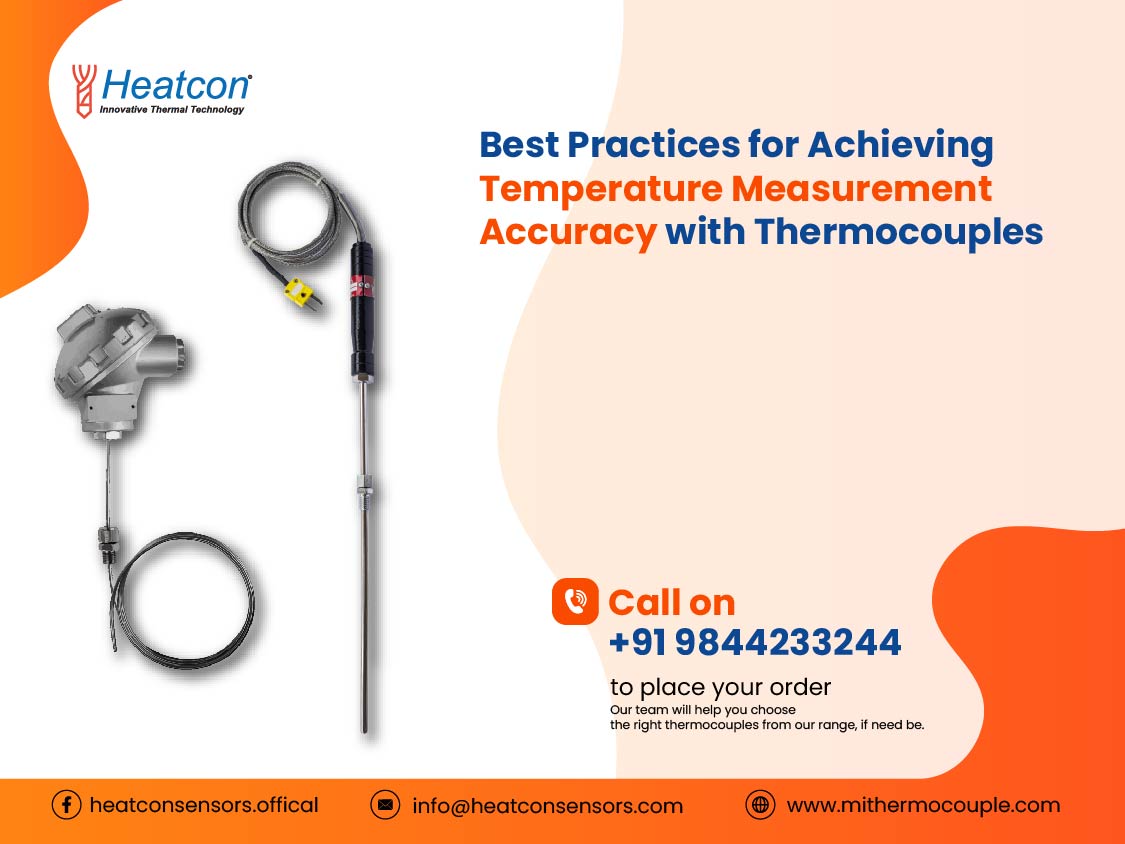Let us discuss the best practices for achieving temperature measurement accuracy utilizing thermocouples.
How to Achieve Temperature Measurement Accuracy with Thermocouples?
Here are some of the key guidelines for maximizing temperature measurement accuracy utilizing Thermocouples:
Right Pick
Precision in temperature readings initiates with the selection of the right type of thermocouple. Key considerations in this regard include environmental factors, chemical compatibility, temperature range, and required precision. Utilizing thermocouple reference tables seems a good step for matching the ideal type with specific temperature range of your industrial application.
Configuration Matters
Various configurations, including bare wire, sheathed, grounded, ungrounded, and protected types, tend to provide distinct sets of advantages relatively for different applications. For example, sheathed thermocouples tend to excel in corrosive environments, while the bare wire variants boast rapid response times.
Strategic Installation & Right Placement
Accurate temperature readings tend to rely considerably on proper installation as well as placement of these sensors. Factors like distance from the heating source, insulation, and protection from electromagnetic interference have to be considered carefully. Secure attachment to process equipment also holds importance for preventing any measurement-altering movement.
Cold Junction Compensation
Precision in the readings also depends on accurate compensation for temperature variations at the cold junction; this is where thermocouple wires connect to the measuring instrument. Techniques including the use of thermocouple reference junctions or electronic compensation circuits hold critical importance for achieving precise readings.
Regular Calibration & Ongoing Maintenance
Regular calibration against a known reference temperature source is definitely crucial to preserve thermocouple accuracy. Implementing a maintenance schedule is also important in order to detect wear & tear, damage, or drift, and accordingly replace or recalibrate thermocouples promptly, as needed.
Reliable Data Acquisition & Monitoring
Investing in robust data acquisition & monitoring systems for real-time temperature tracking is a good step in this regard. Advanced features like data logging, remote access, and alarms empower operators to swiftly respond to any temperature anomalies and pre-empt potential issues that may arise.
Redundancy & Contingency Plans
In certain mission-critical scenarios, deploying redundant thermocouples for the same measurement point helps ensure continuity in the event of a failure. This redundancy adds an extra layer of reliability, which helps in safeguarding against any unforeseen disruptions.
Routine Verifications & Validations
Conducting periodic checks is kind of mandatory so as to confirm that temperature data aligns with expected results. This ongoing validation process is essential for upholding the accuracy & reliability of temperature measurements over time.
Integration with Process Control
Harness the full potential of these sensors by seamlessly integrating temperature data into the process control system. Automated temperature control based on real-time data enhances efficiency, process stability, and also reduces the need for much manual intervention.
In conclusion, thermocouples tend to be indispensable assets for achieving temperature measurement accuracy in different types of industrial settings. By adhering to the best practices in selection, configuration, installation, calibration, and maintenance, industries can leverage these sensors to optimize their industrial processes, enhance product quality, and maximize operational efficiency. Contact Heatcon to fetch the best range of such sensors.


